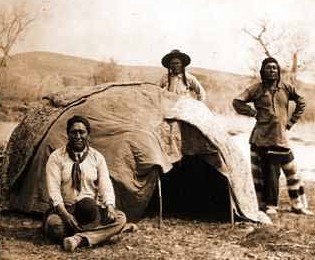Last Friday's Sweat Lodge ceremony was incredible.
 |
| Rachel hugs a tree! |
The day started at 9:30am.
We met up at the House of Geishig in the morning and all drove over to the Glen Rouge Campground to spend the day there, setting up the fires and preparing the lodge and area for ceremony. The genders went off to tend their tasks for the ceremony and regrouped later around the fire.
 |
| Kyle tends to the woodpile |
It was the first ceremony for a couple people and we were humbly honoured to be present when they received Spirit Names from the Elder during the ceremony.
The preparation processes were really interesting to see unfold throughout the day. After lunch, everyone chatted around the campfire and told stories while the stones were heating. The ceremony itself took about an hour, with four sessions of Grandfathers invited into the lodge. It was getting dark and very cold by the time we emerged, steaming and cleansed.
 |
| Kelly gathers cedar |
To read more about what goes on during the day of a Sweat Lodge ceremony, Richard Wagamese has written a beautiful book called "
For Joshua: An Ojibway Father Teaches His Son" in which he tells many tales from his lifetime, one of which is about his first Sweat Lodge ceremony when he was a young man. Here's an excerpt (p.150):
 |
| The Lodges, before preparations |
Then, when it seemed like the heat and the energy in the lodge could climb no higher, Walter called for the Fire Keeper to open the door.
This was the coming of the Light.
 |
| Parisa relaxes by the campfire. |
From the darkness, heat, and discomfort, I was instantly transported to a world of light, cool air, and ease. The burdens, so cumbersome in the darkness, were light-ened. I sat there, breathing deeply, drinking the cool air into the very depths of my spirit. All I could think and feel was gratitude. The only thoughts I could hold onto were those concerned with the difficulty of the ceremony, of this ritual journey, and how the light represented the easing of that difficulty. We laughed now as we relaxed in the coolness and the light... My heart felt alive inside my chest. My mind was clear.
(Richard Wagemese has written several wonderful books about Native life and lives in Ontario.)
 |
| The view of the river behind the lodges |
 This morning in math class we worked on our own for a little while, finishing off some tests and surveys from last week. Later we worked together to figure out the height of a tree using some simple trigonometry concepts.
This morning in math class we worked on our own for a little while, finishing off some tests and surveys from last week. Later we worked together to figure out the height of a tree using some simple trigonometry concepts. First we drew a tree outline on the chalkboard to help us visualize the dimensions. Using the tape measure, we then measured the distance between the chalkboard and where we were standing. (This formed two sides of a right angle triangle.) Then we put the protractor at our feet and measured the angle from the top of the tree down to the pivot point of the protractor (with the help of a bit of string).
First we drew a tree outline on the chalkboard to help us visualize the dimensions. Using the tape measure, we then measured the distance between the chalkboard and where we were standing. (This formed two sides of a right angle triangle.) Then we put the protractor at our feet and measured the angle from the top of the tree down to the pivot point of the protractor (with the help of a bit of string).










